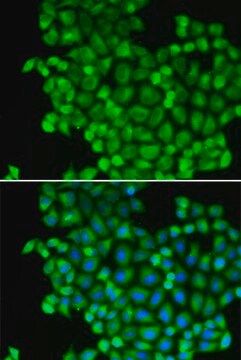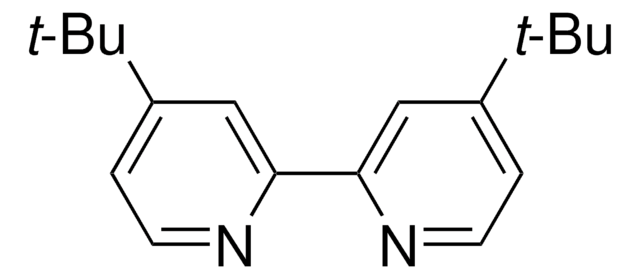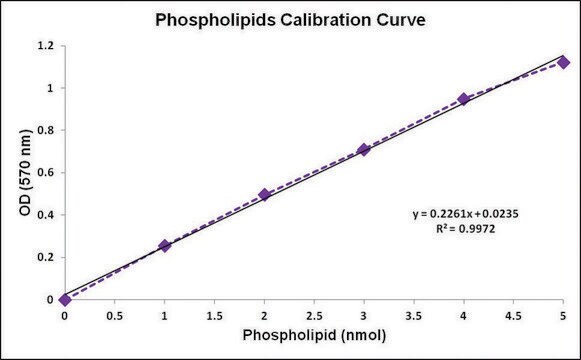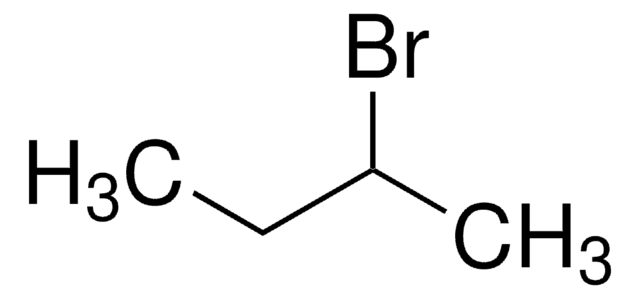一般說明
We are committed to bringing you greener alternative products, which adhere to one or more of The 12 Principles of Green Chemistry. This antibody is Preservative-free, produced without the harm or sacrifice of animals and exceptionally stable to allow for ambient shipping and storage if needed and thus aligns with "Waste Prevention", "Designing Safer Chemicals" and "Design for Energy Efficiency".
Click here for more information.
ZooMAb® antibodies represent an entirely new generation of recombinant monoclonal antibodies. Each ZooMAb® antibody is manufactured using our proprietary recombinant expression system, purified to homogeneity, and precisely dispensed to produce robust and highly reproducible lot-to-lot consistency. Only top-performing clones are released for use by researchers. Each antibody is validated for high specificity and affinity across multiple applications, including its most commonly used application. ZooMAb® antibodies are reliably available and ready to ship when you need them.
特異性
Clone 1I7 is a ZooMAb® rabbit recombinant monoclonal antibody that specifically detects L-lactate dehydrogenase A (LDH-A). It targets an epitope within 15 amino acids within the C-terminal region.
免疫原
KLH-conjugated linear peptide corresponding to 15 amino acids from the C-terminal region of human L-lactate dehydrogenase A.
應用
Quality Control Testing
Evaluated by Western Blotting in NIH3T3 cell lysate.
Western Blotting Analysis: A 1:10,000 dilution of this antibody detected LDH-A in NIH3T3 cell lysate.
Tested Applications
Western Blotting Analysis: A 1:10,000 dilution from a representative lot detected LDH-A in lysates from COS-7, K562, and PC12 cells.
Affinity Binding Assay: A representative lot of this antibody bound LDH-A peptide with a KD of 3.2 x 10-6 in an affinity binding assay.
Flow Cytometry Analysis: 0.1 µg from a representative lot detected LDH-A in one million K562 cells.
Immunohistochemistry (Paraffin) Analysis: A 1:1,000 dilution from a representative lot detected LDH-A in Human liver tissue sections.
Note: Actual optimal working dilutions must be determined by end user as specimens, and experimental conditions may vary with the end user.
標靶描述
L-Lactate dehydrogenase A chain (EC 1.1.1.27; UniProt P00338; also known as Cell proliferation-inducing gene 19 protein, LDH muscle subunit, LDH-A, LDH-M, Renal carcinoma antigen NY-REN-59) chain (EC 1.1.1.27; UniProt P00338; also known as Cell proliferation-inducing gene 19 protein, LDH muscle subunit, LDH-A, LDH-M, Renal carcinoma antigen NY-REN-59) is encoded by the LDHA (also known as GSD11, PIG19) gene (Gene ID 3939) in human. LDH is a homotetrameric, cytosolic enzyme that is found at high levels in tissues that utilize glucose for energy. It catalyzes the reversible conversion of pyruvate to lactate with the regeneration of NADH to NAD+. This reaction involves the transfer of a hydride ion from NADH to the C2 carbon of pyruvate. This conversion is essential in hypoxic and anaerobic conditions when ATP production by oxidative phosphorylation is disrupted. Detection of LDH in serum indicates organ and tissue damage and it serves as a good marker for screening of tissue injuries. Five tetrameric isozymes of LDH have been described that are composed of two different types of subunits (M-muscle type and H-heart type), which can yield five combinations: H4; H3M; H2M2; HM3; and M4. LDH-A is the muscle specific isoform is expressed mainly in the skeletal muscle. A sequence of ten amino acids in its N-terminal region is reported to be important for its structural stability, enzyme activity, and sensitivity to denaturing environments. Cancer cells are known to use LDH-A to increase the rate of glycolysis and production of ATP and lactate even in the presence of oxygen. This switch to anaerobic glycolysis benefits cancer cells by avoiding generation of oxidative stress by the electron transport chain. Overexpression of LDH-A is associated with several poor prognostic factors, including tumor hypoxia, angiogenesis, proliferation, and resistance to chemo- and radiotherapy. This ZooMAb® recombinant monoclonal antibody, generated by our propriety technology, offers significantly enhanced specificity, affinity, reproducibility, and stability over conventional monoclonal. (Ref.: Valvona, CJ., et al. (2016). Brain Pathol. 26(1); 3-17; Kim, JW., and Dang, CV. (2006). Cancer Res. 66(18); 8927-8930).
外觀
Purified recombinant rabbit monoclonal antibody IgG, lyophilized in PBS with 5% Trehalose, normal appearance a coarse or translucent resin. The PBS/trehalose components in the ZooMAb formulation can have the appearance of a semi-solid (bead like gel) after lyophilization. This is a normal phenomenon. Please follow the recommended reconstitution procedure in the data sheet to dissolve the semi-solid, bead-like, gel-appearing material. The resulting antibody solution is completely stable and functional as proven by full functional testing. Contains no biocide or preservatives, such as azide, or any animal by-products. Larger pack sizes provided as multiples of 25 µL.
重構
300 µg/mL after reconstitution at 25 µL per vial. Please refer to guidance on suggested starting dilutions and/or titers per application and sample type.
儲存和穩定性
Recommend storage of lyophilized product at 2-8°C; Before reconstitution, micro-centrifuge vials briefly to spin down material to bottom of the vial; Reconstitute each vial by adding 25 µL of filtered lab grade water or PBS; Reconstituted antibodies can be stored at 2-8°C, or -20°C for long term storage. Avoid repeated freeze-thaws.
法律資訊
ZooMAb is a registered trademark of Merck KGaA, Darmstadt, Germany
免責聲明
Unless otherwise stated in our catalog or other company documentation accompanying the product(s), our products are intended for research use only and are not to be used for any other purpose, which includes but is not limited to, unauthorized commercial uses, in vitro diagnostic uses, ex vivo or in vivo therapeutic uses or any type of consumption or application to humans or animals.

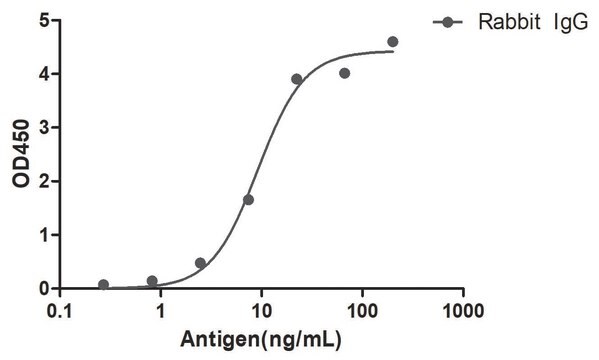

![[4,4′-双(1,1-二甲基乙基)-2,2′-联吡啶]二氯化镍(II)](/deepweb/assets/sigmaaldrich/product/structures/471/091/6faa29b1-bf8a-4d87-90b2-4cc55e082620/640/6faa29b1-bf8a-4d87-90b2-4cc55e082620.png)
